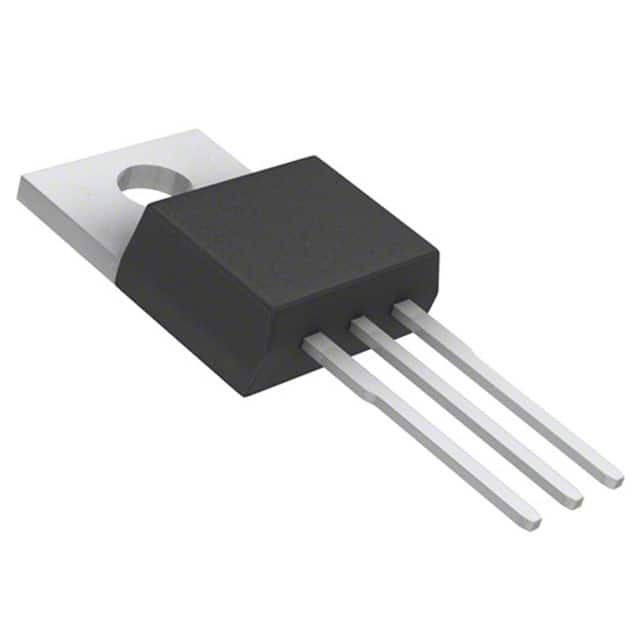Viz Specifikace pro podrobnosti o produktu.

FQP7N40
Introduction
The FQP7N40 is a power MOSFET belonging to the category of electronic components used in various applications. This entry provides an overview of the FQP7N40, including its basic information, specifications, pin configuration, functional features, advantages and disadvantages, working principles, application field plans, and alternative models.
Basic Information Overview
- Category: Power MOSFET
- Use: The FQP7N40 is commonly used as a switching device in power supply circuits, motor control, and other high-power applications.
- Characteristics: High voltage capability, low on-resistance, fast switching speed.
- Package: TO-220
- Essence: Efficient power management and control.
- Packaging/Quantity: Typically packaged individually or in reels of varying quantities.
Specifications
- Voltage Rating: 400V
- Current Rating: 7A
- On-Resistance: 1.4Ω
- Gate Threshold Voltage: 2-4V
- Operating Temperature Range: -55°C to 175°C
Detailed Pin Configuration
The FQP7N40 typically has three pins: 1. Gate (G): Input for controlling the switching operation. 2. Drain (D): Connects to the load or power supply. 3. Source (S): Connected to ground or the common reference point.
Functional Features
- High Voltage Capability: Suitable for high-voltage applications.
- Low On-Resistance: Minimizes power loss and heat generation.
- Fast Switching Speed: Enables efficient power control and management.
Advantages and Disadvantages
Advantages
- High voltage capability
- Low on-resistance
- Fast switching speed
- Efficient power management
Disadvantages
- Sensitivity to static electricity
- Gate drive requirements
Working Principles
The FQP7N40 operates based on the principle of field-effect transistors, where the gate voltage controls the flow of current between the drain and source terminals. When the gate-source voltage exceeds the threshold, the MOSFET turns on, allowing current to flow through it.
Detailed Application Field Plans
The FQP7N40 finds applications in various fields, including: - Power supply circuits - Motor control systems - Inverters - Switching regulators - Audio amplifiers
Detailed and Complete Alternative Models
Some alternative models to the FQP7N40 include: - IRF540 - STP7NB40 - FQPF7N40C
In conclusion, the FQP7N40 is a versatile power MOSFET with high voltage capability, low on-resistance, and fast switching speed, making it suitable for a wide range of high-power applications.
[Word Count: 332]
Seznam 10 běžných otázek a odpovědí souvisejících s aplikací FQP7N40 v technických řešeních
What is FQP7N40?
- FQP7N40 is a power MOSFET transistor designed for high-speed switching applications.
What are the key specifications of FQP7N40?
- The FQP7N40 has a maximum drain-source voltage of 400V, a continuous drain current of 7A, and a low on-resistance.
What are the typical applications of FQP7N40?
- FQP7N40 is commonly used in power supplies, motor control, lighting, and other high-power switching applications.
What are the advantages of using FQP7N40 in technical solutions?
- FQP7N40 offers low on-resistance, high-speed switching capability, and efficient power handling, making it suitable for various demanding applications.
How does FQP7N40 compare to other similar MOSFET transistors?
- FQP7N40 stands out due to its combination of high voltage capability, low on-resistance, and fast switching characteristics, making it a versatile choice for many applications.
What are the thermal considerations when using FQP7N40 in technical solutions?
- Proper heat sinking and thermal management are important to ensure that FQP7N40 operates within its specified temperature limits for reliable performance.
Can FQP7N40 be used in automotive applications?
- Yes, FQP7N40 can be utilized in automotive systems such as electronic control units (ECUs), lighting, and motor drive applications.
Are there any specific layout considerations when designing with FQP7N40?
- It's important to minimize parasitic inductance and ensure proper gate driving to maximize the performance of FQP7N40 in technical solutions.
What are the typical voltage and current waveforms associated with FQP7N40 in switching applications?
- Voltage and current waveforms will depend on the specific application, but generally, FQP7N40 exhibits fast rise and fall times, contributing to efficient switching.
Where can I find detailed application notes and reference designs for using FQP7N40 in technical solutions?
- Application notes and reference designs for FQP7N40 can typically be found on the manufacturer's website or through authorized distributors, providing valuable guidance for implementation.

